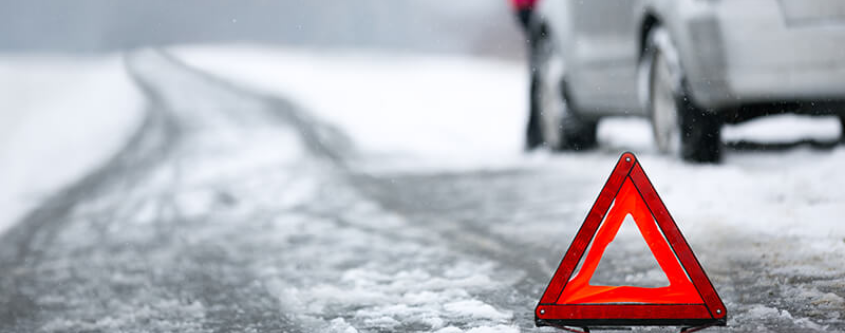Top 8 Myths For Safe Winter Driving in Canada
By Medinah on Jan 15, 2021
Living in Canada means snowy winters! Winter season has started and with it, many driving issues as well. Maintenance of the car in winters is a tough job but it is better to keep the road problems under control, as much as possible. But, if you believe in keeping in silly winter driving myths, you would become a danger not only for yourself but also for other road users. For a safe drive in winters or we must say snowy winters in Canada, you need to stop clinging to old myths.
The top ten winter driving myths are highlighted here along with the truth so you won’t get lost this season. Otherwise, you will end up wasting a lot of money on your vehicle.
Winter-Tyres Waste of money
Do you also believe that you don’t need winter tires for safe driving, as long as roads are not loaded with snow? Or you have been driving in the snow without winter tyres? Pity!
First, you must stop calling them snow tires as they are winter tyres. And secondly, YES, you do need to replace your all-season tires with winter tires because they are made with an exclusive flexible rubber compound that never hardens in snow and offers you a better asphalt grip. Besides, their engraved grooves help in channeling away the slush and water fast to avoid hydroplaning.
Keep Your Engine Idle To Warm Up The Vehicle
You must have heard that keeping the engine idle for a few minutes before getting in the car will keep the car warm inside. Definitely, one of the most famous winter myths!
There is no need to keep your vehicle idle, not even for a single minute or in severe snowy weather for a secure winter driving. Why? Because it is not only bad for your engine but also your health. Idling an engine produces excessive carbon monoxide which is highly dangerous. It makes fuel consumption faster or you can say waste. Most importantly, it vanishes the lubricating oil by letting the unburned fuel get inside cylinders causing untimely engine problems.
No Need To Clean The Lights OR Screen/Mirrors
One of the largest winter myths of all time! Yes, every person MUST clean their car’s screen, mirrors, and head or tail lights. Swiping the windscreen with wipers won’t solve the problem. Be sure to wash away all the snow and ice stuck on any part of the glass and even lights, otherwise, it will hinder the visibility. By washing, I didn’t mean to pour hot boiling water on a frozen windscreen. NO! it will break the glass within a second. Choose a high-quality frost cover to prevent ice piling in snowy weather.
We know, snow brushes are a pretty expensive option. So, you need to do the hard work. Plus, it would be better if you replace your normal LED lights with halogen because they will melt the snow away, effortlessly. While driving, always keeps the head and tail lights on for safety but keep your fog lights safe and use fog lamps in diminished visibility.
All-Wheel-Drive or Four-Wheel-Drive
If your vehicle is an AWD and you think this makes it invincible, you are highly mistaken. Although it does offer better traction, having low-grade tires that fail to hold on to the asphalt…a petty combination! Similarly, Consider FWD an asset, but not a safe escape.
AWD will only give you an improved acceleration for winter driving but that doesn’t mean it will also make your vehicle stop faster.
Salted Roads Are The Vehicle’s Friend
You don’t have to wash the car weekly in winters. Do you agree? Well, you shouldn’t, because salt and metal can never be friends. Washing your car regularly even in winters is definitely worth your time. You can consider road salt as a major cause of engine defects. Washing will remove all the ugly-looking white salt stains and keep the rust away.
If roads are not salted but sanded, it can also do immense harm with time, if it gets stuck inside tires, engines, and motor.
All you need are parking and anti-lock brakes for a safe winter driving
Driving on snow or icy roads is never easy even if you have the most cutting-edge anti-lock brakes.
If the driver pulls the parking brake on expected road slipping, you will only be refuting the capacity of the vehicle to activate its ABS. in simple words, it means the car’s stopping power will only be minimized even if you pull the brake on time. The only way is to keep the acceleration and deceleration of the vehicle at a stable and lesser speed.
I Can’t Do Anything About Black Ice
Oh, yes, you can! You absolutely can! Black ice means thin ice. If you are stuck on the thin layered ice, although it sounds terrifying, there are ways to handle the situation. Start with anticipating. Don’t even think to apply the brake. Let go of the throttle steadily while steering your car in the right direction.
Heavy Trunk Means Better Road Grip & Traction
If you have been or you have seen others adding extra weight back in a vehicles’ trunk just to get improved traction, you all have been doing wrong! One more of the old winter driving myths. There is no relation between weight and traction.
Besides, it depends on the type of vehicle, you are driving. For FWD, adding bulk at the rear will only lower the traction instead of improving, as you would be unbalancing the weight distribution. It will work A BIT, only if it's RWD.


